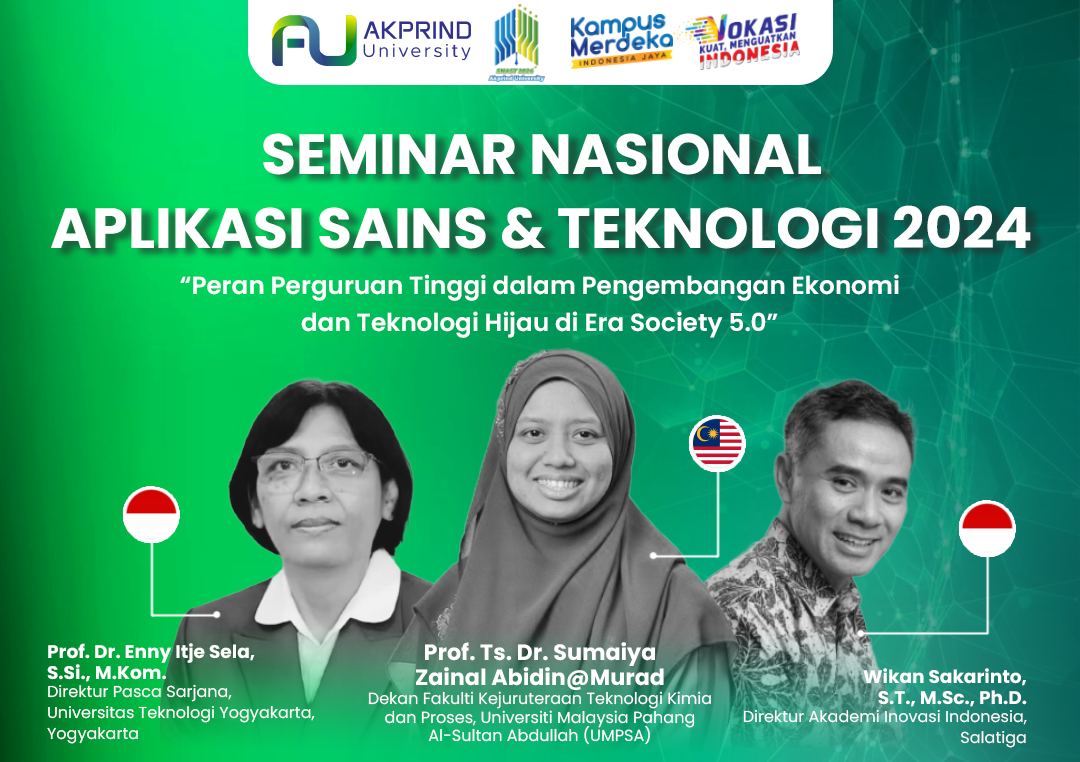ANALISIS PERBAIKAN TAKE UP MOTION PROCESS PADA MESIN TENUN AIR JET LOOM DENGAN METODE FMEA
DOI:
https://doi.org/10.34151/prosidingsnast.v1i1.4967Keywords:
FMEA, Loom, Process Improvement, Take up motion, Weaving industryAbstract
Take up motion is a crucial problem in the loom section because one of the core motions of the machine process. There were 67 process failures on the take up motion for three months. The study aims to decrease process failure on the take up motion which impacts on production loss, i.e down time and defects by applying FMEA. After analyzing the flow process, 11 potential causes were found from 3 potential failure modes in the areas. The first priority with RPN value of 108 is the quality of the roll teeth gear is not up to standard. Improvement recommendation is replacing the lower roll gear from plastic material to steel to increase component lifetime and performance. The Second priority with RPN value of 105 is the operator accuracy in installing the fabric roll at the beginning of the process. Improvement recommendation is implementing double checking procedures with inspection by supervisor. The Second priority with RPN value of 105 is the operator accuracy in installing the fabric roll at the beginning of the process. Improvement recommendation is implementing double checking procedures with inspection by supervisor. The third priority with RPN value of 96 is improper lubrication. Improvement recommendation is replacing the oil lubricant with grease which is appropriate for the engine speed. This research can recommend an improvement on take up motion based on the proposed repairs or maintenance list, using the FMEA method to decrease the process failure loom machine in the weaving industry.
References
Afdal, Z. A., & Linarti, U. (2023). Preventive Maintenance Analysis Using Monte Carlo Simulation and Failure Mode and Effect Analysis (FMEA). 22(2), 251–262. https://doi.org/10.23917/jiti.v22i2.21900
Agnisarman, S., Lopes, S., Chalil Madathil, K., Piratla, K., & Gramopadhye, A. (2019). A survey of automation-enabled human-in-the-loop systems for infrastructure visual inspection. Automation in Construction, 97, 52–76. https://doi.org/10.1016/j.autcon.2018.10.019
Bakhtiar, A., Nurwidanto, I. W., Hartini, S., & Wicaksono, P. A. (2021). Process improvement design at PT URW using failure mode and effect analysis. IOP Conference Series: Earth and Environmental Science, 896(1), 012077. https://doi.org/10.1088/1755-1315/896/1/012077
Dedimas, T., & Gebeyehu, S. G. (2019). Application of failure mode effect analysis (FMEA) for efficient and cost-effective manufacturing: A case study at Bahir Dar textile share company, Ethiopia. Journal of Optimization in Industrial Engineering, 12, 23–29. https://doi.org/10.22094/joie.2018.556677.1533
Ebeling, C. E. (2019). An introduction to reliability and maintainability engineering. Waveland Press.
Ervural, B., & Ayaz, H. I. (2023). A fully data-driven FMEA framework for risk assessment on manufacturing processes using a hybrid approach. Engineering Failure Analysis, 152, 107525. https://doi.org/10.1016/j.engfailanal.2023.107525
Febianti, E., Ferdinant, P. F., Wahyuni, N., & Riyani, D. N. (2020). Usulan Penjadwalan Perawatan Mesin Menggunakan Metode Reliability Block Diagram. Performa: Media Ilmiah Teknik Industri, 19(1). https://doi.org/10.20961/performa.19.1.40983
Gheewala, A. C., Jariwala, H., & Gheewala, P. C. (2017). Tension control by servo motor in textile application using electronic let off and electronic take up technique. 2017 International Conference on Energy, Communication, Data Analytics and Soft Computing (ICECDS), 479–482. Chennai: IEEE. https://doi.org/10.1109/ICECDS.2017.8390212
Gupta, K., Jain, N. K., & Laubscher, R. (2017). Introduction to Gear Engineering. In Advanced Gear Manufacturing and Finishing (pp. 1–33). Elsevier. https://doi.org/10.1016/B978-0-12-804460-5.00001-8
Haq, U. N., & Hossain, M. M. (2017). A Review on Reduction of Air Consumption in Air Jet Loom: The Possible Setting Points. Journal of Asian Scientific Research, 7(3), 52–62. https://doi.org/10.18488/journal.2.2017.73.52.62
I. Stanasel, F. Blaga, & C. Stanasel. (2023). The Influence of Module, Facewidth and Helix Angle on the Load Capacity of External Spur Gears. 2023 17th International Conference on Engineering of Modern Electric Systems (EMES), 1–4. https://doi.org/10.1109/EMES58375.2023.10171774
Jangam, S. P., Kumar, S., & Maheshwari, S. (2018). Literature review on analysis of various components of IC engine. Materials Today: Proceedings, 5(9), 19027–19033. https://doi.org/10.1016/j.matpr.2018.06.254
Jiang, S., Jin, Y., Hu, X., Cui, J., & Jin, Y. (2018). Characteristics of intersecting airflows in the narrow flow channel. The Journal of The Textile Institute, 109(4), 517–523. https://doi.org/10.1080/00405000.2017.1357938
Ju, Y., Zhao, Q., Luis, M., Liang, Y., Dong, J., Dong, P., & Giannakis, M. (2024). A novel framework for FMEA using evidential BWM and SMAA-MARCOS method. Expert Systems with Applications, 243, 122796. https://doi.org/10.1016/j.eswa.2023.122796
Juang, Y., Lin, S., & Kao, H. (2007). An adaptive scheduling system with genetic algorithms for arranging employee training programs. Expert Systems with Applications, 33(3), 642–651. https://doi.org/10.1016/j.eswa.2006.06.010
Kim, M.-S., & Sarkar, B. (2017). Multi-stage cleaner production process with quality improvement and lead time dependent ordering cost. Journal of Cleaner Production, 144, 572–590. https://doi.org/10.1016/j.jclepro.2016.11.052
Md Ghazali, W., Daing Idris, D. M. N., Sofian, A. H., Siregar, J. P., & Abdul Aziz, I. A. (2017). A review on failure characteristics of polymer gear. MATEC Web of Conferences, 90, 01029. https://doi.org/10.1051/matecconf/20179001029
Momin, I. M., Mhetre, S. B., & Pinjari, P. Z. (2020). A REVIEW OF AIR CONSUMPTION ON AIR JET WEAVING MACHINES. 07(06).
Nasihardani, D., & Pujianto, H. (2024). Analisis Sistem Informasi dan Proses Bisnis Untuk Penjualan Produk PT ASMI. 11(2).
Ouyang, L., Che, Y., Yan, L., & Park, C. (2022). Multiple perspectives on analyzing risk factors in FMEA. Computers in Industry, 141, 103712. https://doi.org/10.1016/j.compind.2022.103712
Petrescu, R. V. V., Aversa, R., Akash, B., Bucinell, R. B., Corchado, J. M., Berto, F., … T. Petrescu, F. I. (2017). Gears-Part I. American Journal of Engineering and Applied Sciences, 10(2), 457–472. https://doi.org/10.3844/ajeassp.2017.457.472
Pujianto, H., Yulianto, B., Bintang, H. S., & Pramesti, D. A. (2023). Optimum Splice Thickness Ratio Splicer of a Winding Machine to PE20KT Thread Splicing Quality. Sainteks: Jurnal Sains dan Teknik, 5(2), 228–235. https://doi.org/10.37577/sainteks.v5i2.605
Rahayu, A. (2016). Evaluasi Efektivitas Mesin Kiln dengan Penerapan Total Productive Maintenance pada Pabrik II/III PT Semen Padang. Jurnal Optimasi Sistem Industri, 13(1), 454. https://doi.org/10.25077/josi.v13.n1.p454-485.2014
Salah, B., Alnahhal, M., & Ali, M. (2023). Risk prioritization using a modified FMEA analysis in industry 4.0. Journal of Engineering Research, S2307187723001645. https://doi.org/10.1016/j.jer.2023.07.001
Saxena, A., Chouksey, M., & Parey, A. (2017). Effect of mesh stiffness of healthy and cracked gear tooth on modal and frequency response characteristics of geared rotor system. Mechanism and Machine Theory, 107, 261–273. https://doi.org/10.1016/j.mechmachtheory.2016.10.006
Subakdo, W. A., Pujianto, H., & Pakpahan, P. C. (2020). Reduksi Limbah Pinggiran Kain Jenis Benang Polyester DTY pada Mesin Rapier. 4(1).
Tureková, I., Depešová, J., & Bagalová, T. (2014). Machinery Risk Analysis Application in the System of Employee Training. Applied Mechanics and Materials, 635–637, 439–442. https://doi.org/10.4028/www.scientific.net/AMM.635-637.439
Wan, X., Cen, L., Yue, W., Xie, Y., Chen, X., & Gui, W. (2024). Failure mode and effect analysis with ORESTE method under large group probabilistic free double hierarchy hesitant linguistic environment. Advanced Engineering Informatics, 59, 102353. https://doi.org/10.1016/j.aei.2024.102353
Wismer, S. E., Jimenez, A., Al-Douri, A., Grabovetska, V., & Groth, K. M. (2024). PEM electrolyzer failure scenarios identified by failure modes and effects analysis (FMEA). International Journal of Hydrogen Energy, 89, 1280–1289. https://doi.org/10.1016/j.ijhydene.2024.09.397
Downloads
Published
Issue
Section
License
Copyright (c) 2024 Hendri Pujianto

This work is licensed under a Creative Commons Attribution-ShareAlike 4.0 International License.







